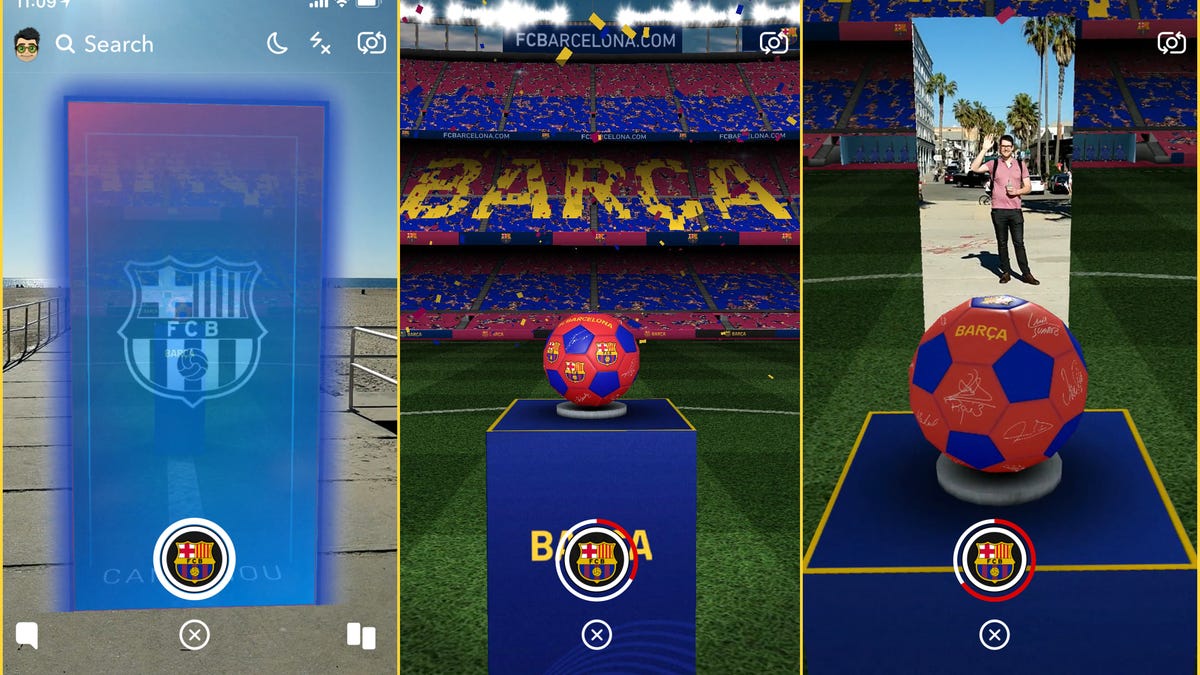Heads-up: Google's official AR apps are coming to these phones
Play Ghostbusters in the real world -- or anything else an app developer dreams up.

Samsung's Note 8, Galaxy S8 , S8 Plus, S7 and S7 Edge. Google's Pixel , Pixel XL , Pixel 2 and Pixel 2 XL . The LG V30 , OnePlus 5 and the Asus ZenFone AR .
Update, Feb. 25 at 10:00am PT: Samsung's just-announced Galaxy S9 and Galaxy S9 Plus as well.
If you own one of these phones -- and theoretically many more to come -- you'll soon be able to experience a new breed of apps coming to Google's app store.
Google is on Friday launching ARCore 1.0, the first full version of its toolkit to let any developer easily make Pokemon Go-like augmented reality apps that place virtual objects into the real world. More importantly, it allows developers to publish those apps to its Google Play Store for the very first time.
Would you like to pretend to be a Ghostbuster and chase down ghosts lurking in your neighborhood? Step into your favorite soccer... I mean, football stadium? See how a piece of furniture might fit in your house, or a new Porsche might look in your driveway?
Google says ARCore apps will offer those specific things -- yes, including an official Ghostbusters game called Ghostbusters World and a look inside FC Barcelona's Nou Camp stadium, thanks to a partnership between Google and Snapchat.
And if Apple's rival ARKit apps are anything to go by (see gallery below), those are just the tip of the iceberg.
Originally announced as a developer preview in August, Google's ARCore is much the same idea as Apple's ARKit. It uses your phone's rear camera to scan the world around you, recognize surfaces (like floors, tables and posters on the walls), and realistically "pin" virtual objects to those locations.
The Wayfair app lets you see what furniture might look like in your home. There's a version for iPhone as well.
You can make a tiny ninja village or a basketball hoop appear on the floor, and interact with it through the window of your phone -- and developers who want to build those apps don't need to figure out how, because Google and Apple have done the heavy lifting for them.
In August, we learned ARCore would be similar enough to Apple's ARKit that iPhone and iPad developers would be able to easily port their apps over. Google AR/VR exec Amit Singh tells CNET he expects that to happen soon: "We fully expect people who are building for other platforms to want to target 100 million plus users as well," he said, referring to the 100 plus million phones that will support ARCore within the next few weeks.
(According to market research firm Strategy Analytics, the supported Samsung phones alone -- S8, S8 Plus, Note 8, S7 and S7 Edge -- added up to nearly 108 million handsets by the end of 2017.)
So if you've got one of these phones, where do you find the apps? Unlike Google's previous Tango initiative, which required special hardware and whose apps were fenced off, these new ARCore apps will live alongside normal apps in the Google Play Store, just as ARKit apps do on Apple's platform. Singh says they'll also be available in a curated section of the Play Store too, and be promoted there.
But you may also need to wait a tad before the apps show up: Unlike Apple's ARKit, which was prominently pegged to the release of a new version of the iOS operating system, ARCore will be quietly rolling out to supported Android phones over the next few weeks in a less visible way. When you start seeing AR apps promoted to you in the Play Store, perhaps as late as mid-March, you'll know your phone is ready.
In addition to ARCore 1.0, Google's also announcing expanded availability of its Google Lens app, which analyzes images from your phone's camera to provide information about what it sees.
Google execs tell CNET they believe Lens and ARCore might grow closer together in the future, perhaps by augmenting what you see through your phone's lens with real-time 3D visualizations. "If you have a flower you're looking at ... why should that information be a boring card on the bottom?" says Google Lens boss Aparna Chennapragada. "Why shouldn't the flower bloom?"

